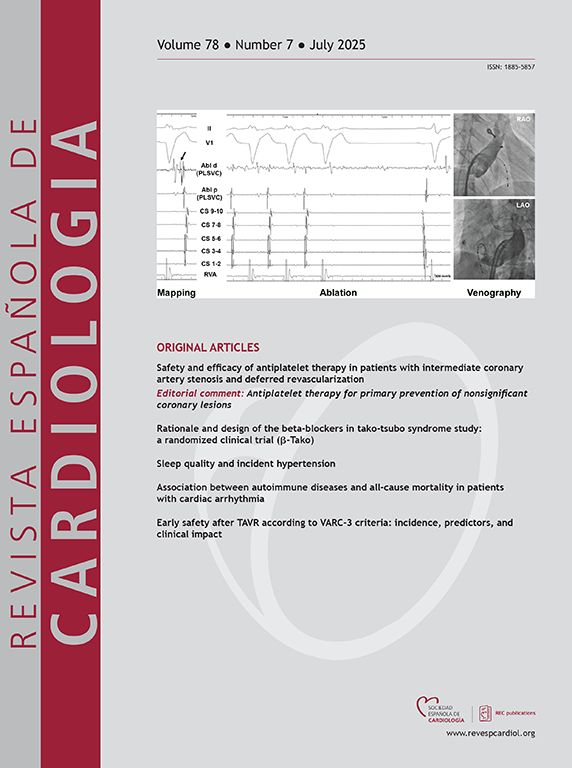Introduction and objectives: There are limited data on drug-coated balloon (DCB) treatment for de novo diffuse coronary artery disease (CAD). This study aimed to evaluate the clinical impact of DCB-based percutaneous coronary intervention (PCI) in patients with de novo diffuse long CAD.
Methods: We retrospectively included 623 patients with single de novo diffuse CAD (≥ 30 mm). These patients underwent PCI exclusively for the target lesion and were successfully treated with DCB-based PCI. They were compared with 623 propensity-matched patients who underwent conventional PCI with second-generation drug-eluting stents (DES) for diffuse CAD (DES-only group). The primary endpoint was major adverse cardiovascular events (MACE), defined as a composite of cardiac death, myocardial infarction, stent or target lesion thrombosis, target vessel revascularization, and major bleeding at 2 years.
Results: In the DCB-based group, 73.7% of patients were treated with DCB alone. The MACE rate was significantly lower in the DCB-based group than in the DES-only group (4.6% vs 14.6%; hazard ratio: 0.29; 95% confidence interval: 0.18-0.47; P < .001). Rates of target vessel revascularization (3.1% vs 9.7%; P < .001) and major bleeding events (0.8% vs 2.7%; P = .008) were also lower with DCB-based PCI than with DES-only PCI. In a multivariable model, DCB-based PCI was independently associated with a lower risk of 2-year MACE, target vessel revascularization, and major bleeding.
Conclusions: In patients with de novo diffuse CAD, DCB-based PCI was associated with a significant reduction in MACE compared with DES-only PCI.
Keywords
Identify yourself
Not yet a subscriber to the journal?
Purchase access to the article
By purchasing the article, the PDF of the same can be downloaded
Price: 19,34 €
Phone for incidents
Monday to Friday from 9am to 6pm (GMT+1) except for the months of July and August, which will be from 9am to 3pm

